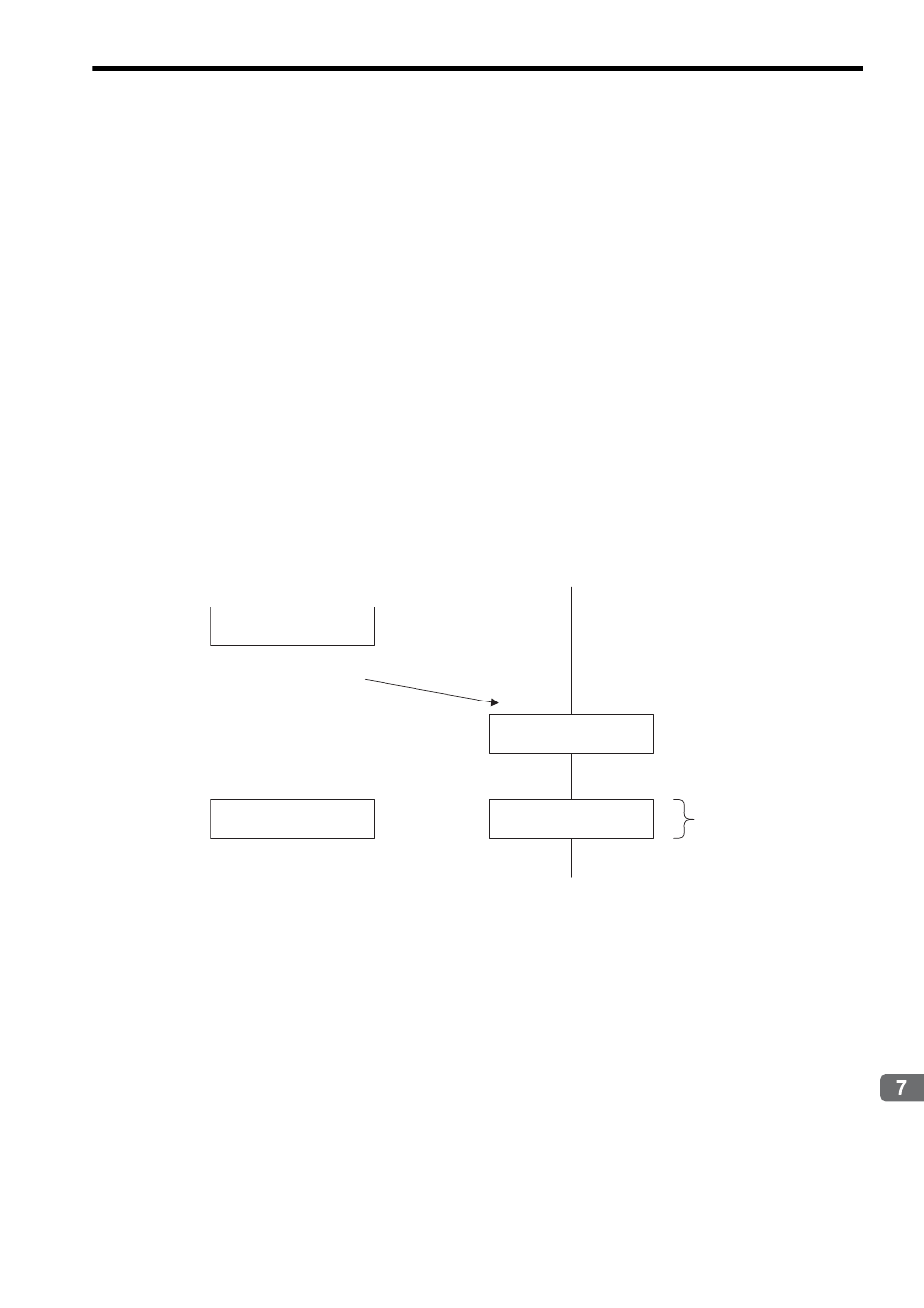4 how to execute slave cpu synchronous function, 1 ) turning on the master side power first – Yaskawa MP2300S Basic Module User Manual
Page 285

7.2 Requirements and Setting of Execution
7.2.4 How to Execute Slave CPU Synchronous Function
7-7
Slave CPU Synchronous Function
7.2.4 How to Execute Slave CPU Synchronous Function
When the execution requirements described in 7.2.2 Requirements to Execute Slave CPU Synchronous Function are
met, slave CPU synchronization will be automatically executed after the communication between the master and the
MP2300S is established, so you do not need to explicitly command the start. Of course, you can explicitly control the
start, if you wish, by using a slave side control bit SLVSC.
A precaution for the slave CPU synchronous process is given when powering the equipment.
As described in
7.4.1 Precautions on Usage, when transforming from the asynchronous to synchronous state using the
slave CPU synchronous function, a slave side scan cycle (high/low speed) may delay up to one scan cycle, affecting the
slave side application.
To avoid this impact, the procedures of “Turning ON the Master Side Power First” and “Turning ON the Slave Side
Power First,” are suggested.
In general, we recommend that you execute the simple procedure for “Turning ON the Master Side Power First.”
( 1 ) Turning ON the Master Side Power First
After confirming that the master side startup is complete, turn ON the slave side power.
To determine the startup completion within the application, use system register SB000401 “RUN”.
Operate the master side.
Turn ON the master power.
Confirm the completion of
master startup.
Check the slave status.
Operate the slave side.
Turn ON the slave power.
Check the slave status.
Refer to 7.3.1-7.3.2
Refer to
7.3.1 and 7.3.2.